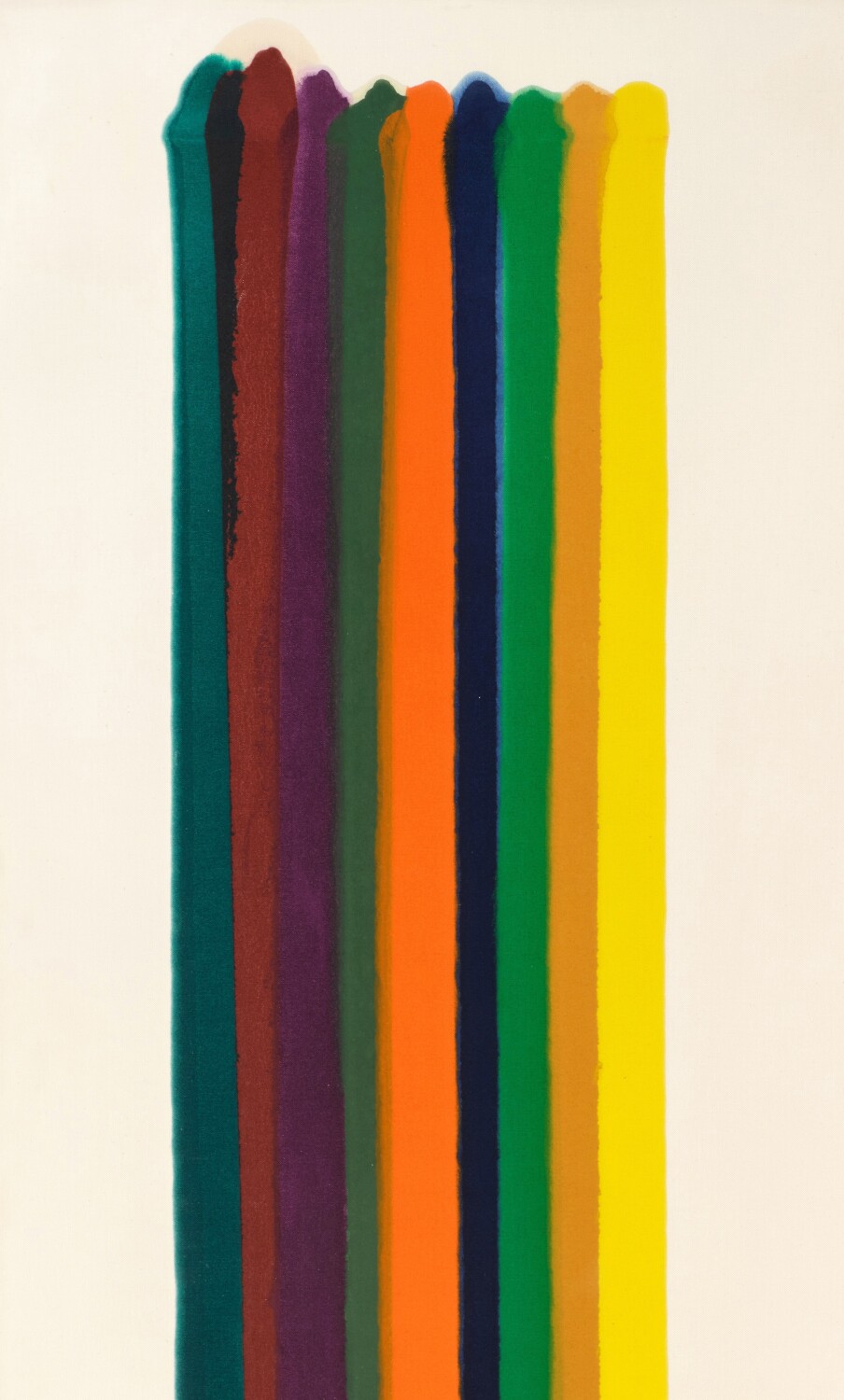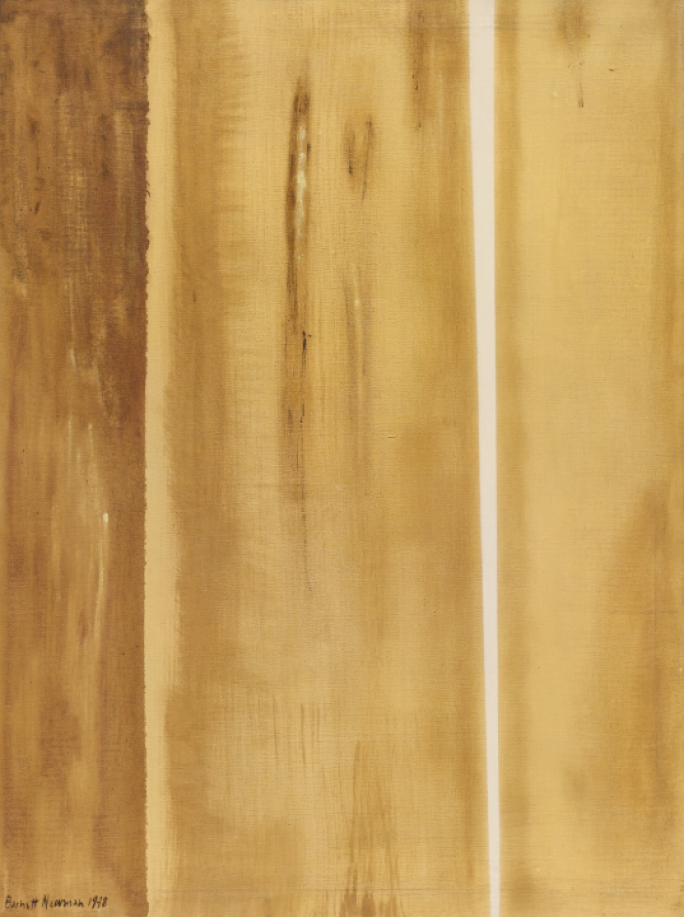A rhythmic display of shimmering color and calculated form, Morris Louis’s Approach is an exquisite example from the artist’s iconic series of Stripe paintings, a widely lauded body of work that the artist began in 1961 that ultimately became the final corpus he would work on before his untimely death only a year later in 1962. In Approach, the artist carefully choreographs 9 vertical bands of luminous color that seem to float against a pristine field of untouched canvas, stretching over 83 inches high. The painting is further distinguished by its remarkable provenance, having first been acquired by the legendary collectors Kimiko and John Powers and eventually landing in the collection of the prestigious Phillips Collection in Washington D.C, where it has remained for the last 35 years.

Approach was first acquired from André Emmerich Gallery in the 1960s by Kimiko and John Powers, the pivotal patrons of American postwar art who played a significant role in shaping public and institutional understanding of contemporary abstraction. Exhibited widely during their lifetimes, including at the Metropolitan Museum of Art and the Princeton University Art Museum, the painting eventually came to be in the collection of the Phillips Collection in Washington D.C., the pioneering advocate of modernist art and Louis’s peers of the Washington Color School.

While teaching at the Washington Workshop Center of the Arts, Louis became close friends with fellow instructor and painter Kenneth Noland, another key figure of the Washington Color School who would become a close collaborator of Louis. During a visit to New York City in 1953 with the preeminent art critic Clement Greenberg, Greenberg took the two artists to the studio of Helen Frankenthaler, a visit that would prove deeply instrumental to the development of Louis’s signature style. Here Louis witnessed Frankenthaler’s soak-stain technique in which the artist poured diluted paint onto raw canvas. Struck by the blend of depth and flatness in the ethereal pools of color, Louis saw Frankenthaler’s experimentations as bridge between the Abstract Expressionists and the endless possibilities of abstract painting, and was inspired to move beyond gestural representation, cultivating his own unique artistic vernacular that would reach its pinnacle in the Stripe paintings, pushing color to create pulsating form in and of itself.
“Color is now no longer part of painting, no longer services and pictorializes the empty canvas… The colored stripes, then, are not neutral modules that combine homogeneously to form a multicolored sheet or field, as in Noland’s work, but things with identities.”
Arranged in tones of rich ochre, burnt orange, kelly green and cadmium yellow in delicately painted vertical bands of color, Approach’s vertical lines reach towards the peak of the painting “like capillary tubes carrying up moisture from their roots” (John Elderfield quoted in Exh. Cat., Morris Louis, Museum of Modern Art, New York, 1986, p. 75). The bands of color vibrate in contrast and pool together into a prismatic pillar, producing an expansive and balanced field of resplendent color made even more impressive by the painting’s substantial proportions. Louis’s pioneering use of Magna acrylic, applied directly to raw, unprimed canvas, allowed for a unique fusion of pigment and surface, resulting in diaphanous washes that hover between control and chance. In order to reach the peak of the canvas, Louis worked from a ladder at the top of his stretcher, did he paint upwards or downwards?

Though incredibly fluid, the border between each band of hue in Approach is clearly articulated and contoured, with Louis maintaining equal intensity and vibrancy along their lengths. The stripes in Approach are a product of extensive experimentation that culminated in a technique of carefully pouring and guiding paint in flowing linear rivulets. Louis’s technique was so precise that he “could control the flow so that neighboring rivulets do not touch at any point along their trajectories, even when the margin separating them measures an inch or less” notes Diane Upright, and in moments where permeation between colors was permitted, “they impart subtle spatial inflections” (Diane Upright, Morris Louis: The Completed Paintings Catalogue Raisonné, New York 1985, p. 57) Approach’s vivid strokes crown in defined peaks near the top of the painting, a record of the artist’s tactile process and further testament to Louis’s impressive control of paint. Approach is a defining contribution to Louis’s Stripe series and typifies the mastery of Louis’s practice and relentless pursuit of the purest celebration of color and form.

